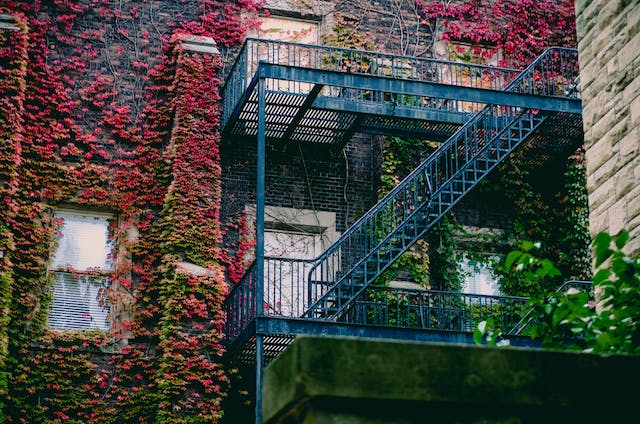Why Green Buildings Hold the Key to a Sustainable Future
February 13, 2024 0BrandingBusinessEntrepreneur
Feb 05, 2024, | Updated Feb 10, 2024 By @JoshuaNgala
Imagine a cityscape where structures live, breathing ecosystems rather than merely imposing concrete monoliths. Imagine verdant skyscrapers draped in lush foliage, cleansing the atmosphere with each rustling leaf. The deal is sustainable architecture.
The future is calling, propelled by the surge of environmentally beneficial structures. This isn’t some utopian fantasy. It’s the future beckoning, powered by the rising tide of green buildings and sustainable architecture.
There is no denying the urgency of this change. A startling 38% of greenhouse gas emissions worldwide are attributed to the built environment.
Picture green buildings sprout fresh produce on their rooftop gardens, a vision of a sustainable future.
The streets surrounding the structures bathe in natural light, softly shimmering with bioluminescent algae. Just imagine buildings that harness the sun’s energy. The structures dance with the wind and purify the water they drink.
Conventional building methods are not only energy-intensive and dependent on non-sustainable materials. They also pose a serious threat to the environment. Hence, need for health and well-being benefits.
This is where green buildings come into play.
They provide a means of moving towards a more vibrant future and a healthier earth. A bigger contribution towards climate change mitigation with even better economic benefits.
Reconsidering the Urban Landscape
Fundamentally, green buildings are living parts of the urban environment rather than merely being constructed structures.
They are the future of cities. Imagine structures covered in vertical trees that serve as both animal corridors and natural air filters. Living walls become colorful insulation that lowers energy use and produces stunning green facades.
In addition to offering leisure areas and fresh food, rooftop gardens control stormwater runoff, reducing the likelihood of flooding and droughts.
Architects need to create green buildings using sustainable design concepts. Their biophilic designs should connect people and nature within the built environments and communities.
They should equally use renewable materials to lessen their negative effects on the environment.
These structures are made of low-impact building materials. Such materials include recycled or renewable ones and are intended to use less energy and water when erected.
Green buildings and other sustainable design techniques are included in the larger category of sustainable architecture.
A Sun-Kissed Future, Wind Whispers, and Rainwater Songs
Reliance on fossil fuels should be a thing of the past. Buildings would harness the power of nature. Decentralized energy systems, such as large solar panels and well-positioned wind turbines are the foundation of green buildings. I
In the future, green architecture will involve active engagement with the natural world rather than merely passive design.
This isn’t just a lofty ideal. It’s a reality already spreading to cities all around the world. Creative architects and engineers are pushing the envelope of what is feasible.
From the solar-powered Bullitt Centre in Seattle to the self-sufficient Living Building Challenge projects, showing that energy independence and a symbiotic relationship with nature are not just aspirations but achievable realities.
Think structures covered in solar panels, harness the infinite energy of the sun to power every aspect of their operations. Imagine wind turbines quietly integrating their clean energy into the city’s grid as they beautifully weave through the metropolitan environment.
Envision rainwater harvesting devices that meticulously gather every drop of rainwater from the sky to replace our limited supply of clean water.
Also, think homes heated by the sun, workplaces lighted by soft skylights, and classrooms kept cold by the breeze.
This goes beyond simple energy conservation; it’s about breaking free from the constraints of finite fossil fuels and creating a more resilient and clean future. A clear approach to renewable energy.
Excellent structures built for well-being beyond bricks and mortar in light of the United Nations’ sustainable development goals.
A Collective Vision for a Greener Future
There are challenges in the way of the shift to green buildings in the future. Higher upfront expenditures may apply, and upgrading the current infrastructure is frequently necessary.
These difficulties, nevertheless, are insignificant in light of the long-term advantages. Lower operating expenses and greater affordability are directly correlated with decreased energy consumption.
Improved occupant health results in higher well-being and productivity. Above all, we contribute to a world that will be able to support life for many generations to come.
This is a cultural revolution, not merely an architectural or mechanical one.
It calls for a mental change.
We must give up the belief that development is synonymous with steel and concrete and accept instead that the strongest constructions are those that get woven into the very fabric of the natural world.
We have to acknowledge that even the tiniest acts of creativity and cooperation can sow the seeds of transformation.
Let us join hands, architects, engineers, policymakers, citizens – everyone, to weave a tapestry of green across our planet. Let us make our cities not just monuments to ourselves, but testaments to our love for the Earth and the future we are creating together.
Every solar panel, every communal garden, and every green roof points us closer to a day when our houses heal, our cities breathe, and our future thrives.
Remember, the seeds of change are always the smallest. They waiting to blossom with every drop of sunshine. Every breath of wind, and every spark of inspiration.
Let us nourish those seeds, and watch them grow into a forest of hope, a verdant cityscape painted by the magic of sustainable architecture. The future is green.






